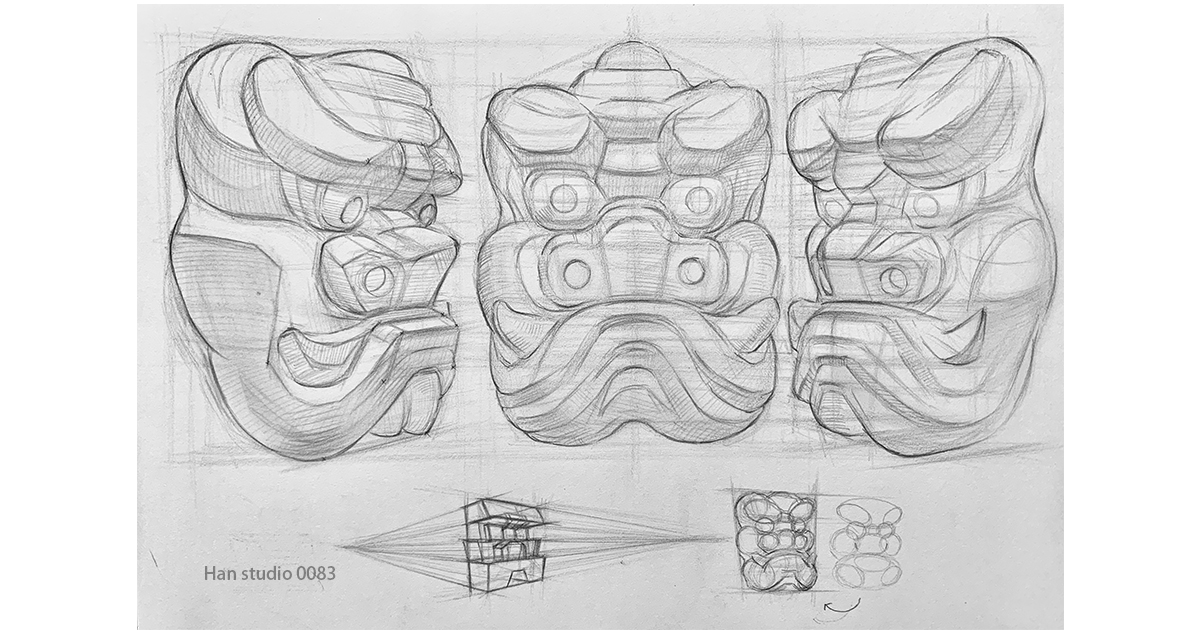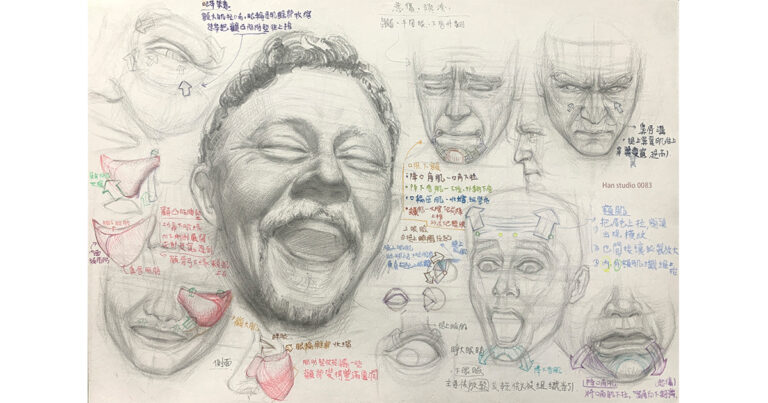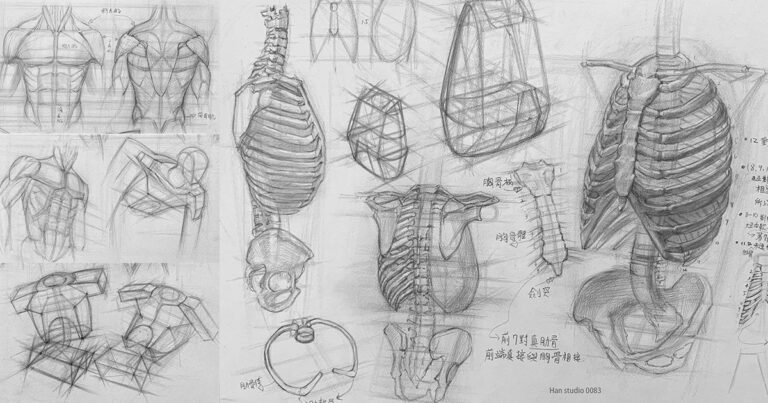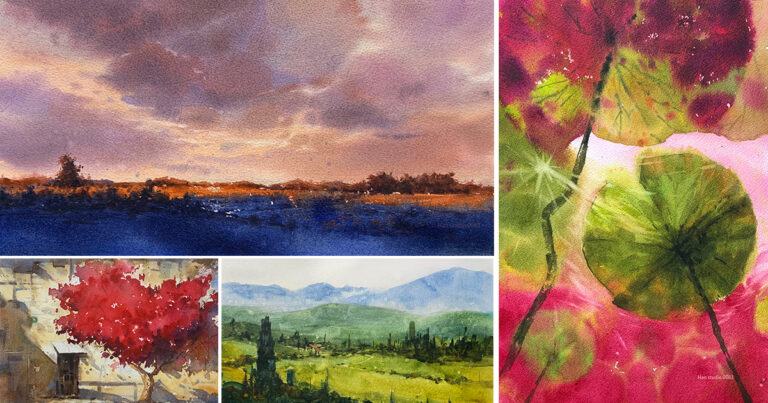Here’s a record of this week’s mask still-life study, which offers a great opportunity to practice subtle variations in shading on dark areas.
Side note: The tusks on the mask's mouth made me wonder if this could be a character from Japanese Noh theater, perhaps some sort of demon-slaying guardian spirit? 🤔
In the second half, I also sketched out other mask structures. If you're interested, keep reading!
●How to Understand the Structure of a Mask:
1. Composing with Geometric Shapes:
When observing physical objects, simplifying them into geometric shapes makes it easier to understand their characteristics. For example, in the small sketch at the bottom right, the forehead is drawn with an oval, and the cheeks with circles.

2. Proportions and Perspective:
The three masks shown at different angles on the top of the image maintain a width-to-height ratio of about one square plus an extra third. After drawing the basic shapes, perspective lines can help verify alignment. For instance, are the eyes aligned with the perspective of the entire face? Or do they sit unevenly, one higher than the other?
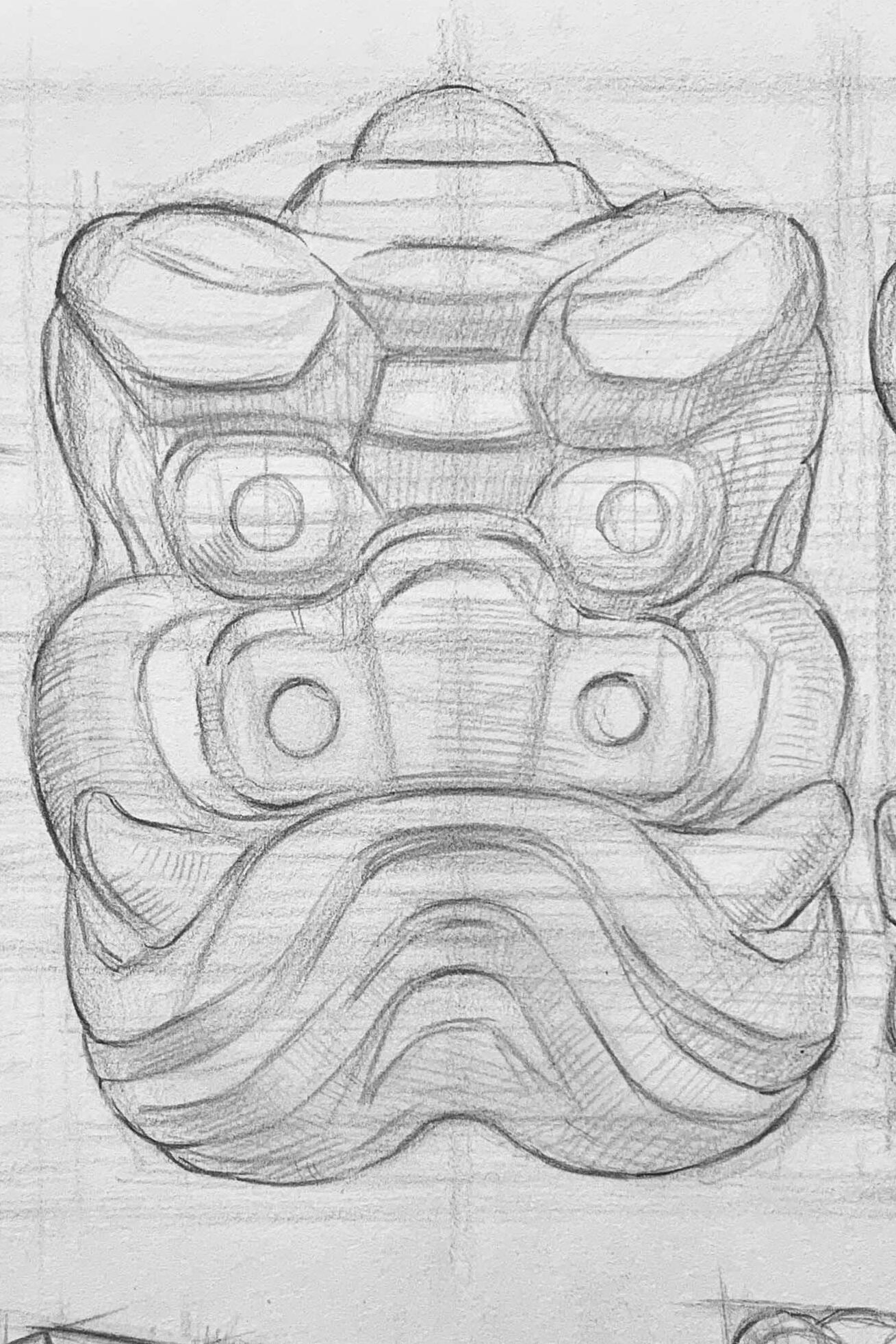
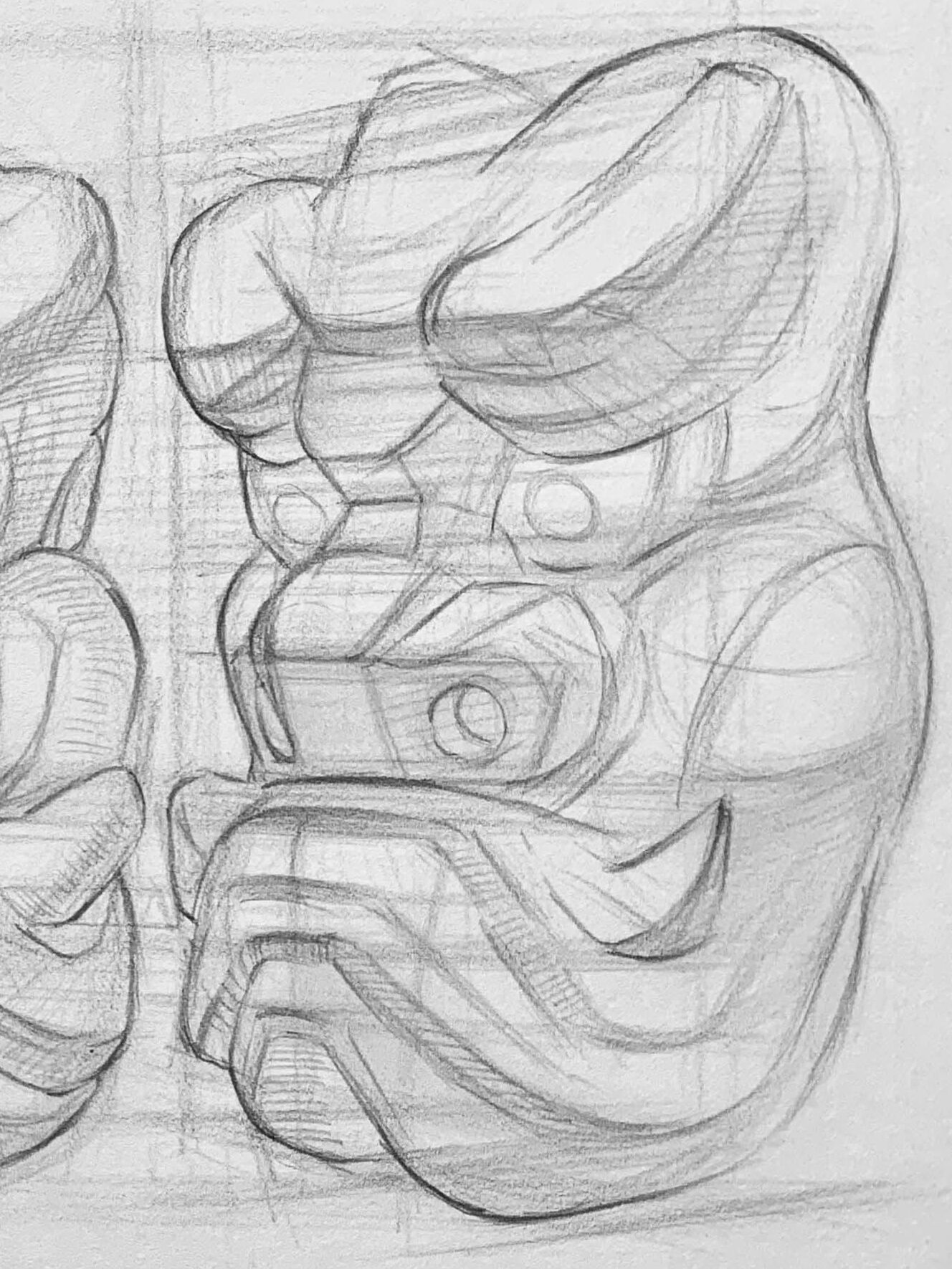
3. Segmented Observation:
Breaking the mask into larger blocks—such as the brow ridge, nose bridge, and mouth—makes it easier to capture the defining features of each section. In the small diagram at the bottom left, I’ve simplified these areas into blocks to help visualize the major turns and shifts in the form.
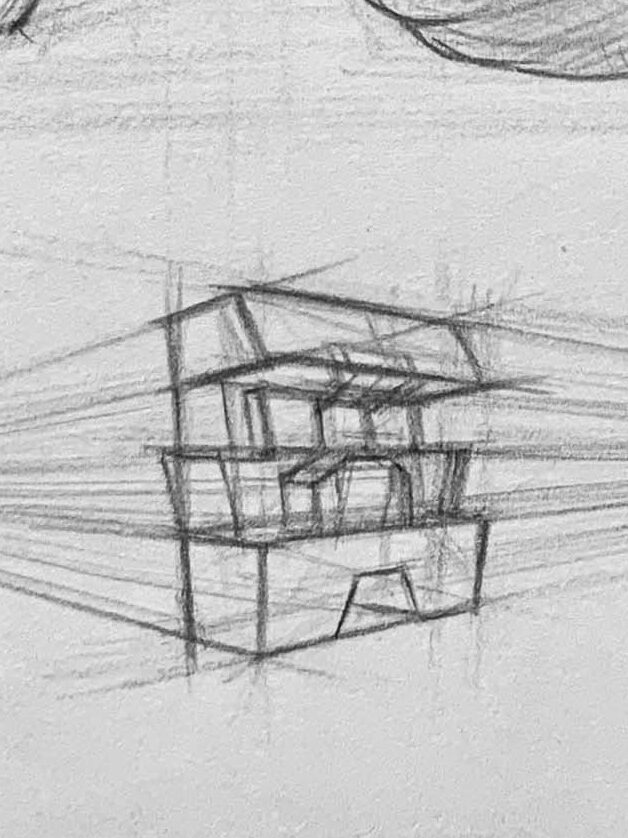
4. Shadows and Form Transitions:
Structure lines can be used to mark shadow transitions and identify which sections can be grouped as a whole. For example, in the top image, the dark area under the brow ridge can be viewed as part of the eye socket's shadowed region, forming one cohesive shadow block.
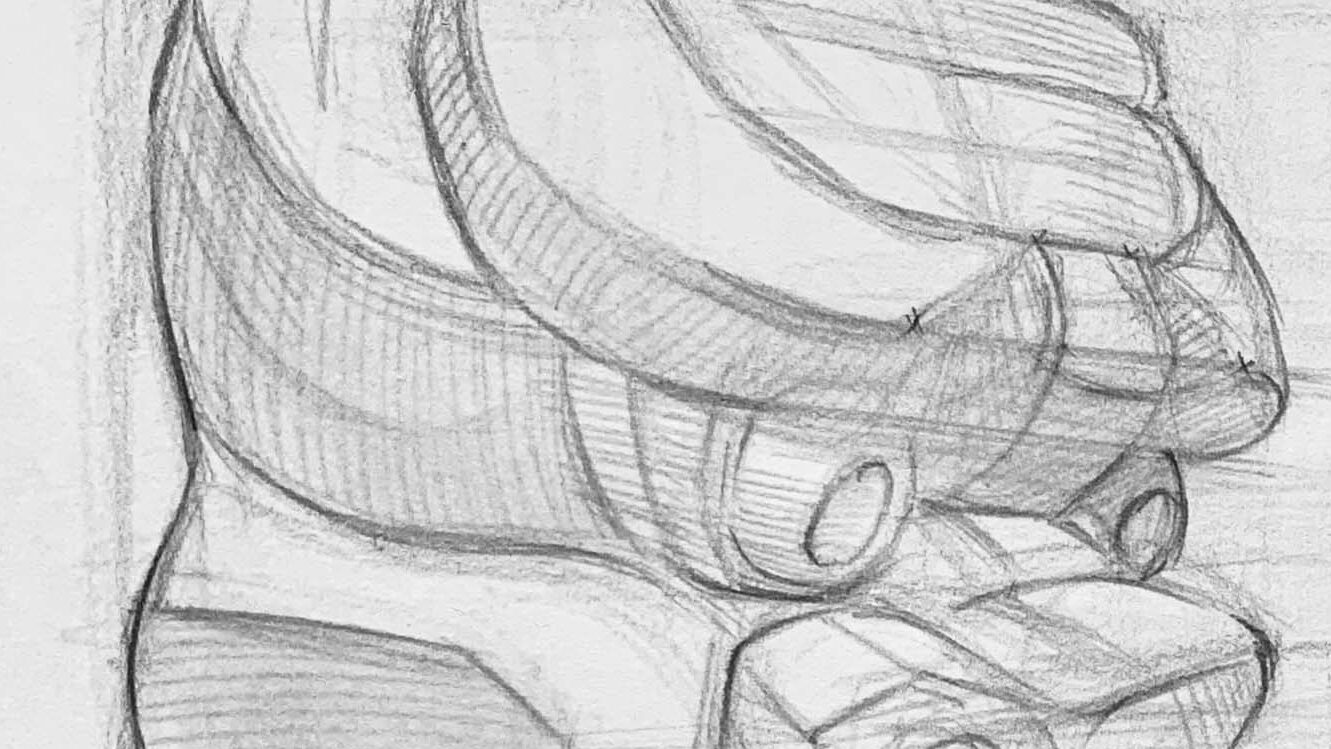

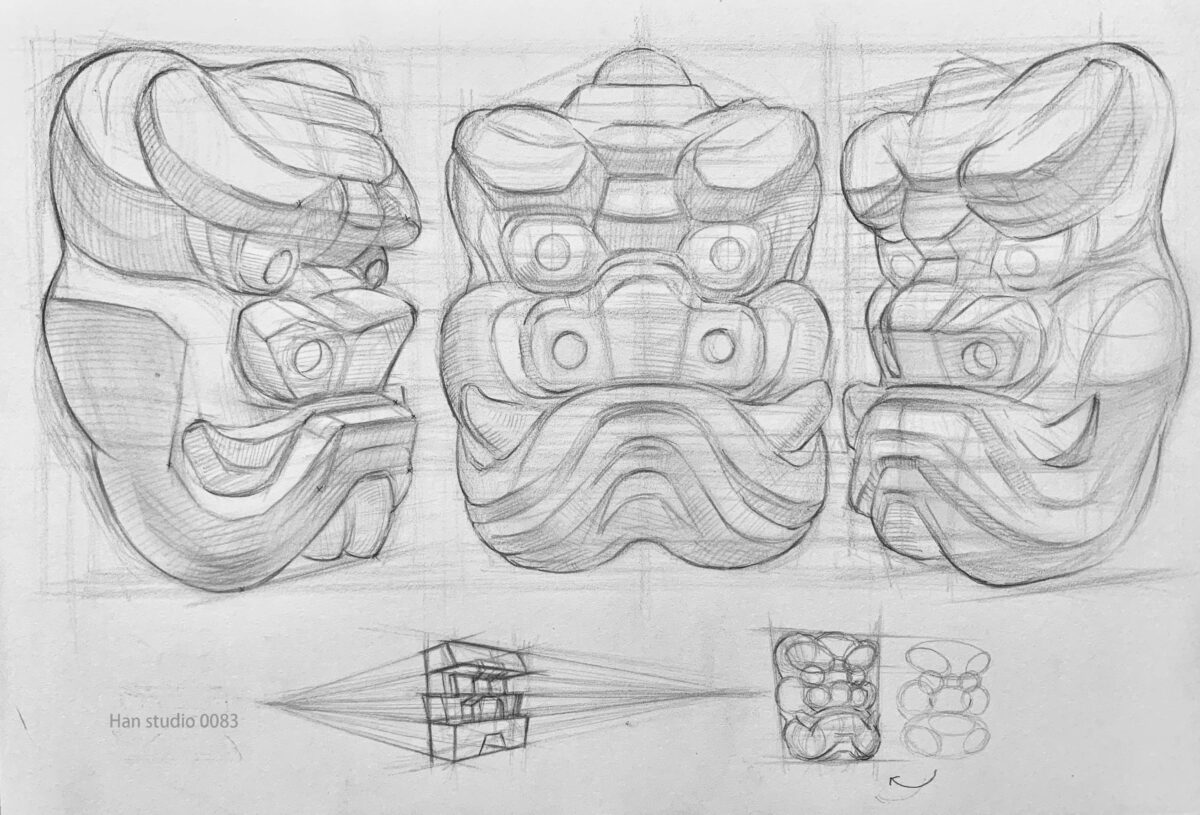
I hope this structural introduction helps you understand the key points about boats. If there are any topics or drawing techniques you'd like to learn, feel free to leave a comment or message me. Happy drawing!
If you're interested in learning to draw but don't know where to start, or if you'd like to understand the knowledge behind drawing,
feel free to join my LINE and contact me. In my classes, I organize drawing methods in a clear and structured way.
Click here to learn more about my drawing courses!
Other Related Portrait Sketching Articles:
How to Draw Arms: Learn Arm Movements and Bone Proportions
How to Draw Ears:Simplified Ear Structure and Shading Tips
How to Use Two-Tone Shading: Simple Shadow Techniques
How to Sketch Facial Muscles: Capture Realism and Expression
How to Accurately Master Hand Proportions and Joint Structure
Building Up from Simple Contours to Detailed Eye Portraits
Capturing Realism in Lip Drawing: Key Structures and Shading
Understanding the Three Key Elements of Head Structure
Mastering the basic proportions and structure of portrait drawing
